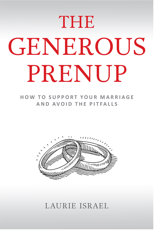This is a guest article by Susan Boardman.
 In my practice I have never met a couple who didn’t have problems communicating. It is at the core of a struggling couple’s dynamic, and exacerbates their conflict. How can the process of Marital Mediation help couples to communicate more effectively? A central piece of this process for me is to not only teach communication skills, and have clients practice them, but also incorporate them into the final mediated agreement. In this way, the couple not only comes to some agreement concerning issues in conflict, but are made mindful of how they communicate. In essence communication is made explicit as an issue in conflict, an issue that must be dealt with, and becomes the building block upon which all the other issues are tackled. As every therapist and mediator knows, couples cannot change behaviors or begin to repair their relationship if every time they open their mouth, they inflict psychological hurt and anger on their partner.
In my practice I have never met a couple who didn’t have problems communicating. It is at the core of a struggling couple’s dynamic, and exacerbates their conflict. How can the process of Marital Mediation help couples to communicate more effectively? A central piece of this process for me is to not only teach communication skills, and have clients practice them, but also incorporate them into the final mediated agreement. In this way, the couple not only comes to some agreement concerning issues in conflict, but are made mindful of how they communicate. In essence communication is made explicit as an issue in conflict, an issue that must be dealt with, and becomes the building block upon which all the other issues are tackled. As every therapist and mediator knows, couples cannot change behaviors or begin to repair their relationship if every time they open their mouth, they inflict psychological hurt and anger on their partner.
With respect to communication, one of the most important tasks of the mediator is to “reframe” or “detoxify” the communication. The following describes a case study where I utilized communication skills training in conjunction with Marital Mediation to create an agreement that focused on communication changes, among others. (This case study is a combination of facts from many marital mediations. Identifying information has been removed or changed.)
This couple were in their early 50’s, with two children in college. They had been married for 25 years. Both parties were sincerely interested in improving their relationship and communication (an ideal Marital Mediation couple) for the sake of the
children as well as themselves. They were going into debt to fund their children’s college educations, and were very concerned with their own future financial security. They both expressed still caring for each other. However, the communication patterns and anger displayed by both the wife and husband had gotten to the point where they were contemplating separation.
It became very apparent that this couple’s, what I call “dance”, centered around a very common stressor: that is, the wife became emotional after being frustrated in her communication, and reacted by crying, yelling, etc., and the husband would try to keep things calm for a period of time, and then explode in response. Both acknowledged this communication pattern. Much of the work I did with this couple focused on communication training. For example, learning to use “I-messages” (“I feel “ X “when you” do Y “because” state a consequence to you, e.g.,” it makes me feel badly”) instead of using attacking “You always/never “ statements. We also worked on active listening and paraphrasing, as well as accepting the other’s reality. That is, learning not to dismiss the other person’s reality or feelings by saying “that’s not true”, or “you’re wrong” (which people naturally hear as meaning that the other person is right) or “I didn’t say that”, or “X won’t happen the way you say it will”. It’s demeaning and escalates conflict. It is important to try to remember that both parties are “right”, in that they are reacting to each other, not in a vacuum, and there is something about the tone and body language that conveyed a message, even if the words themselves were innocuous.
In addition to having the couple practice communication exercises, not only in session but at home as well, I mediated an agreement concerning a number of communication issues including: the process of deciding upon visiting the children at college, decisions on funding for college, creating house rules and boundaries concerning living with a mother-in-law, coordinating guiding their young adult children; and communication rules between spouses. For example, these rules included practicing self-monitoring for anger and conflict escalation, setting aside 20 minutes to talk to each other twice a week with ground rules framing the conversation, and practicing thanking the other whenever they did something nice. The communication interventions utilize various tools such as journals, and communicating with different colored cards to express emotion and give immediate feedback, and are designed to raise awareness of destructive communication patterns in both parties, identification of “hot buttons”, and substitution of more constructive communication patterns. Each of the communication rules and tools was practiced and mediated as to plausibility and comfort of use for each party before being integrated into the agreement. The couple reported better communication and a stronger relationship over a period of months.
While Marital Mediation can be used to resolve conflicts involving finances, division-of-labor, job conflicts, as well as a number of other issues, I believe it can also be used to address communication problems. Having said that I also believe that the success of such an intervention is dependent upon such factors as the mediator’s training and comfort level with communication and psychological issues , (for example, attorney mediators will probably feel less comfortable than mental health mediators), and the willingness and ability of the couple to work on communication and practice skills (i.e., couples who are not functioning well psychologically or couples with significant pathology would probably lack the ability to integrate the skills, and in that case may need more traditional therapy in conjunction with Marital Mediation, a point that has been documented.)
As we continue to develop the field of Marital Mediation through writing, giving trainings, and research, our responsibility also includes defining how Martial Mediation overlaps, and is different from, other therapies or interventions. While Divorce Mediation is clearly different from “therapy”, Marital Mediation, with its focus on improving the relationship, often comes under attack from mental health specialists who claim it’s just another kind of therapy. I disagree with this opinion. I am a psychologist who specializes in communication and conflict resolution, and a mediator, but not a therapist. I would never call myself a therapist, as I do not have that training, just as I hope therapists who don’t practice mediation, and haven’t had that training would not call themselves a mediator. However, one type of therapy does share several characteristics with Marital Mediation: Solution Focused Brief Therapy (SFBF). It shares a short-term time frame, a future focus, and a concentration on achieving concrete goals. However the methodology is different. While the therapist works on “The Miracle Question”, asking the client to describe an ideal future without the presenting problem, and breaks down the steps the client might take to achieve the desired future, a Marital Mediator might ask a client what would need to be different in the future for the marriage to improve (a type of miracle question), and then mediate between the two spouses what actually will behaviorally change. A final agreement must be developed that reflects the major issues of both parties, as well as a kind of template of how these issues will be addressed. Mediation may be therapeutic, but therapy is not mediation. If a SFBT therapist went on to do mediation with a couple in his or her work, I would argue s/he had stepped into the realm of Marital Mediation, however SFBT typically does not involve mediation.
I am excited by this field. I believe it has great potential, once we clearly articulate it and address its boundaries and interactions with other interventions. I, with my colleagues, look forward to the day when “Marital Mediation” is as well known as “Divorce Mediation”. Over 20 years ago not many people had heard of Divorce Mediation. There was only litigation. That still is the case with some clients, but more people are realizing the tremendous value of Divorce Mediation, of couples speaking out and defining the terms of their divorce, not imposed by a judge or attorney. It is time for couples to use the mediation process to improve their relationship, to improve communication, to improve their lives for themselves and their children. I look forward to “spreading the word” that there is another process out there that can help.
Copyright Susan Boardman.
